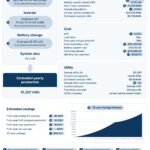A compare and contrast essay is a powerful academic tool used to analyze the similarities and differences between two or more subjects. This essay style is particularly effective for clarifying the distinctions and connections between related topics, especially those often confused or grouped together inaccurately.
Sharing common ground with other essay types, the compare and contrast essay distinguishes itself by its core function: exploring both the contrasting and common elements of subjects. By examining these similarities and differences, readers gain a deeper understanding of each subject, using one as a lens to view the other.
In this guide, we will delve into the essential aspects of writing a compelling compare and contrast essay. We will explore the optimal essay format, from structuring your arguments to crafting a strong thesis statement. Understanding the format is the first step to mastering this essay type.
The Purpose and Power of Comparison Essays
Imagine you’re writing about the benefits of electric cars but find yourself constantly explaining how gasoline engines work. To truly appreciate the advantages of electric vehicles, your audience needs context—understanding the conventional alternative. However, if you dedicate equal time to both, the focus becomes diluted, resembling two separate essays.
This is where the compare and contrast essay shines. When two subjects are inherently linked or define each other, exploring their similarities and differences provides a richer, more nuanced understanding of both. This is particularly valuable for subjects frequently mistaken for one another. By clearly outlining what they share and where they diverge, you illuminate their individual characteristics and their relationship.
Unlike argumentative or persuasive essays that champion a single viewpoint, compare and contrast essays embrace multiple subjects. While they may not delve as deeply into each subject as single-topic essays, they are a staple in academic settings, especially college assignments. They effectively demonstrate a student’s grasp of multiple concepts and their analytical abilities.
Deconstructing the Compare and Contrast Essay Format
Writing an effective compare and contrast essay hinges on two key elements: a clear thesis statement that defines your essay’s focus and a well-organized structure to present your points logically.
Crafting a Strong Thesis Statement
The first step is selecting your subjects for comparison. This can be challenging, especially when the choice is yours. To spark ideas, consider these compare and contrast essay topic categories:
- Opposing Options within a Category:
- Organic vs. Conventional Farming
- City Living vs. Suburban Living
- Related Artistic or Cultural Movements:
- Impressionism vs. Post-Impressionism
- Hip Hop vs. R&B Music
- Influential or Connected Figures:
- Steve Jobs vs. Bill Gates
- Frida Kahlo vs. Georgia O’Keeffe
- Evolution Across Time Periods:
- Social Media in 2010 vs. Social Media Today
- Education Before and After the Internet
- Distinct Yet Related Locations:
- New York City vs. Los Angeles
- Beaches vs. Mountains for Vacation
- Conflicting Theories or Beliefs:
- Nature vs. Nurture in Child Development
- Capitalism vs. Socialism
- Often Conflated Concepts:
- Empathy vs. Sympathy
- Immigration vs. Emigration
Once you have your subjects, brainstorming is crucial. Begin by listing all the similarities and differences you can identify between them. This comprehensive list will help you discern patterns, connections, and guide your essay’s structure.
A Venn diagram can be a valuable visual tool at this stage. It allows you to visually organize shared and unique characteristics, clarifying the relationships between your subjects.
With your lists and diagrams, you can now formulate your thesis. Ask yourself: What is the central point you want to convey through your comparison? What key takeaway should your reader gain? For instance, are you aiming to show how Impressionism paved the way for Post-Impressionism, or to highlight their fundamental artistic divergences? Your answer will shape your thesis.
Structuring Your Essay for Clarity
Compare and contrast essays adhere to the standard essay structure of introduction, body, and conclusion.
- Introduction: Sets the stage, introduces subjects, and presents your thesis statement.
- Body Paragraphs: Develop the comparison, presenting similarities and differences. This is the core of your essay.
- Conclusion: Summarizes key points and restates your thesis in a new light.
The introduction, typically one to two paragraphs, should immediately engage the reader and clearly state your thesis, outlining the essay’s scope. Ensure you mention all subjects in your introduction. The conclusion provides closure, reinforcing your main argument without simply repeating the introduction.
The body paragraphs are where the Compare And Contrast Essay Format becomes nuanced. The challenge lies in deciding how to organize your points about each subject. Let’s explore the primary organizational methods.
Exploring Different Compare and Contrast Essay Formats
The most crucial structural decision in a compare and contrast essay is how to arrange your body paragraphs. You have three main options:
- Block Method (Subject-by-Subject): Discusses all aspects of one subject before moving to the next.
- Alternating Method (Point-by-Point): Examines a specific point of comparison for both subjects in each paragraph.
- Similarities and Differences Method: Dedicates sections to all similarities, followed by all differences (or vice versa).
The best choice depends on your subjects, thesis, and desired emphasis. Regardless of the method, strong topic sentences are essential to guide the reader through the comparison.
Block Method: In-Depth Subject Exploration
The block method dedicates separate paragraphs to each subject. For example, in an essay comparing coffee and tea, you might have one paragraph detailing coffee’s characteristics (origin, caffeine content, flavor profile) and the next paragraph focusing on tea’s attributes.
This format is ideal for providing comprehensive information about each subject individually. It works well when subjects are complex and require detailed descriptions. However, it can sometimes make the comparison less direct, potentially weakening the connection between the subjects for the reader.
Alternating Method: Direct Point-by-Point Comparison
The alternating method, or point-by-point method, structures paragraphs around specific points of comparison. In the coffee and tea essay, one paragraph could compare caffeine content in both, another paragraph could compare flavor profiles, and so on. Each paragraph directly contrasts the two subjects on a specific attribute.
This method excels at highlighting the direct relationship between your subjects. It’s particularly effective when you want to emphasize specific similarities or differences and create a clear, back-and-forth comparison for the reader. It maintains a strong sense of comparison throughout the essay.
Similarities and Differences Method: Focused Comparison Categories
This method is a variation of the alternating approach, but instead of organizing by specific points, it groups points into broader categories: similarities and differences. You might dedicate one section (or several paragraphs) to all the similarities between coffee and tea, and then another section to all their differences.
This format is useful when you want to draw attention to the overall balance of similarities and differences. It can be particularly effective for building towards a conclusion that emphasizes either the shared aspects or the contrasting elements of your subjects. It can also create a strong sense of culmination, especially if you build from similarities to differences, or vice versa, leading to a final insightful point.
A Step-by-Step Writing Process for Compare and Contrast Essays
The writing process for compare and contrast essays mirrors general essay writing, with a focus on comparative analysis:
- Brainstorming: Generate lists of similarities and differences. Utilize Venn diagrams for visual organization.
- Preparation: Choose your structuring method (block, alternating, or similarities/differences) based on your thesis and content.
- Drafting: Write your first draft, focusing on developing your points and following your chosen structure.
- Revising: Evaluate your draft’s structure, clarity, and flow. Refine arguments, and ensure smooth transitions between points and subjects.
- Proofreading: Carefully check for grammar, spelling, and punctuation errors. Tools like Grammarly can be invaluable in this stage.
Refer to comprehensive essay writing guides for more in-depth explanations of each stage in the writing process.
Expert Tips for Writing Exceptional Compare and Contrast Essays
Beyond mastering the format, these tips will elevate your compare and contrast essays:
Select Related and Relevant Topics
Choose subjects that share a meaningful connection. If topics are too disparate, the comparison becomes forced and lacks purpose. Ideally, subjects should belong to the same category or share a common context. This shared ground makes the comparison insightful and relevant to the reader. Without a clear connection, the essay can feel arbitrary and confusing.
Prioritize Clarity and Reader Understanding
Essays with multiple subjects can easily become complex. Ensure your writing is exceptionally clear, guiding the reader through your comparison. Use transition words and phrases to explicitly signal similarities (similarly, likewise, in the same way) and differences (however, on the other hand, in contrast). Clear topic sentences for each paragraph are crucial, especially in longer essays, to maintain focus and prevent reader confusion.
By mastering the compare and contrast essay format and incorporating these tips, you can produce insightful and well-structured essays that effectively analyze and illuminate the relationships between your chosen subjects.

